 W
W3-in-One Oil is a general-purpose lubricating oil sold for household and do-it-yourself use. It was originally formulated in 1894 for use on bicycles, and remains a popular lubricant for their chains. Its name, given by inventor George W. Cole of New Jersey in 1894, reflects the product's triple ability to "clean, lubricate and protect".
 W
WAramid fibers are a class of heat-resistant and strong synthetic fibers. They are used in aerospace and military applications, for ballistic-rated body armor fabric and ballistic composites, in marine cordage, marine hull reinforcement, and as an asbestos substitute. The name is a blend of "aromatic polyamide".
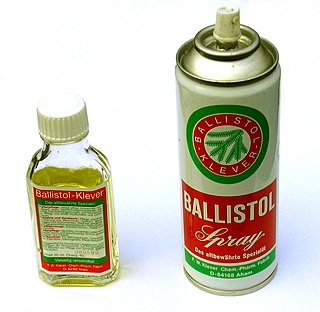 W
WBallistol is a mineral oil-based chemical which advertises that it has many uses. It is manufactured and distributed by Ballistol GmbH in the Bavarian village of Aham and was originally intended for cleaning, lubricating, and protecting firearms.
 W
WBetagel is a material invented in Japan that utilizes gel and silicone to absorb violent shocks.
 W
WBlu Tack is a reusable putty-like pressure-sensitive adhesive produced by Bostik, commonly used to attach lightweight objects to walls, doors or other dry surfaces. Traditionally blue, it is also available in other colours. Generic versions of the product are also available from other manufacturers. The spelling now used is without a hyphen.
 W
WCoex is a biopolymer with flame-retardant properties derived from the functionalization of cellulosic fibers such as cotton, linen, jute, cannabis, coconut, ramie, bamboo, raffia palm, stipa, abacà, sisal, nettle and kapok. The treatment effectiveness was also proven on wood and semi-synthetic fibers such as cellulose acetate, cellulose triacetate, viscose, modal, lyocell and cupro.
 W
WColdHeat was an American company founded to develop and market products using the proprietary graphite-like compound Athalite. The composite material is claimed by the manufacturer to have the unusual ability to conduct large amounts of heat and return to room temperature in a short amount of time.
 W
WCordura is a collection of fabric technologies used in a wide array of products including luggage, backpacks, trousers, military wear and performance apparel. Cordura fabrics are durable and resistant to abrasions, tears and scuffs.
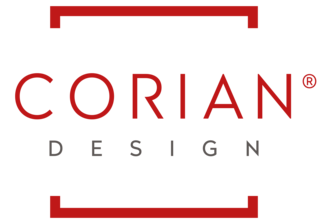 W
WCorian is a brand of solid surface material created by DuPont. Its primary use is as a countertop and benchtop surface, though it has many other applications. It is composed of acrylic polymer and alumina trihydrate (ATH), a material derived from bauxite ore. Corian is the original material of this type, created by DuPont scientists in 1967. A number of direct solid surface competitors to Corian have emerged since the expiration of DuPont’s patent on solid surfaces.
 W
WFlex Seal is an American brand of adhesive bonding products made by the family-owned company Swift Response in Weston, Florida. Founded in 2011, the company employs 100 people led by its pitchman and chief executive officer Phil Swift.
 W
WFormica Laminate is a laminated composite material invented at the Westinghouse Electric Corporation in the United States in 1912. Originally used to replace mica in electrical applications, it has since been manufactured for a variety of applications. Today, the product is produced by New Zealand–based Formica Group, and has been since 2007. The word Formica refers to the company's classic product: a heat-resistant, wipe-clean laminate of paper or textile with melamine resin.
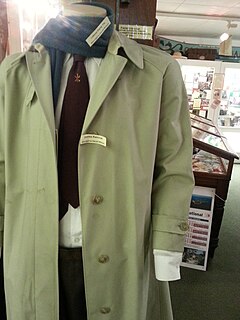 W
WGannex is a waterproof fabric composed of an outer layer of nylon and an inner layer of wool with air between them. It was invented in 1951 by Joseph Kagan, a UK industrialist and the founder of Kagan Textiles Ltd., of Elland, which made raincoats. The company is now defunct. The mill occupied by the company was demolished in 2010. The raincoats were worn by a number of world-famous people.
 W
WGlue sticks are solid adhesives in twist or push-up tubes. Users can apply glue by holding the open tube to keep their fingers clean and rubbing the exposed stick against a surface.
 W
WGore-Tex is a waterproof, breathable fabric membrane and registered trademark of W. L. Gore & Associates. Invented in 1969, Gore-Tex can repel liquid water while allowing water vapor to pass through and is designed to be a lightweight, waterproof fabric for all-weather use. It is composed of stretched polytetrafluoroethylene (PTFE), which is more commonly known by the generic trademark Teflon. The material is formally known as the generic term expanded PTFE (ePTFE).
 W
WGorilla Glue is an American brand of polyurethane adhesives. They are known for their original Gorilla Glue, which was first sold in 1994. The company has since branched out to make a line of similar products, including tapes, epoxies, and other adhesives. The company is based in Sharonville, Ohio.
 W
WHaskelite is the brand name of a plywood, once made by the Michigan-based Haskelite Manufacturing Corporation. It was made from waterproof glue developed by Henry L. Haskell. The moldable plywood was originally called Ser-O-Ply. It was used in the construction of various vehicles including military tanks, boats, airplanes, buses, trucks, and automobiles. The plywood was manufactured with different characteristics depending on particular needs and then given a brand name.
 W
WHMG Heat and Waterproof Adhesive is a brand of cellulose nitrate adhesive manufactured by H Marcel Guest Ltd. It is one of the most popular cellulose nitrate adhesives used in conservation and restoration work, and is used on materials such as metal, wood, glass, and pottery. It is sometimes referred to as "the blue tube", in contrast to "the purple tube", the acrylic B72 Restoration Adhesive also manufactured by the company.
 W
WKevlar is a heat-resistant and strong synthetic fiber, related to other aramids such as Nomex and Technora. Developed by Stephanie Kwolek at DuPont in 1965, the high-strength material was first used commercially in the early 1970s as a replacement for steel in racing tires. It is typically spun into ropes or fabric sheets that can be used as such, or as an ingredient in composite material components.
 W
WLumibrite is a luminous paint used on some models of Seiko, Citizen, Lorus, and Pulsar watches.
 W
WMallite is a type of laminate composite material, formerly manufactured by the William Mallinson & Sons company. The material is formed of a core sheet of end grain balsa wood, faced by duralumin sheets. This construction endows the finished material with greater strength and rigidity than a light alloy sheet of equal mass. The material was originally developed in the late 1950s for use in the aerospace industry, primarily for use in flooring and internal partitioning in jet airliner construction. However, it found fame as one of the first engineered composite materials to be employed in the motorsport industry. Robin Herd, formerly a designer on the Concorde project, used his aerospace knowledge to design the first McLaren single-seater racing cars. The M2A prototype used Mallite extensively, throughout its construction. The final production model, the Formula One McLaren M2B of 1966, only used Mallite for its internal skins and lower bodywork; a lack of understanding of the material's properties had led the team to design the car with conventional curved bodywork, creating problems during the fabrication process as the inherently inflexible material would not readily conform to complex, compound curvatures. With greater understanding of Mallite's properties Herd later used the material to construct the unraced Cosworth four-wheel drive Formula One car of 1969, noted for its slab-sided, angular looks.
 W
WNeoprene is a family of synthetic rubbers that are produced by polymerization of chloroprene. Neoprene exhibits good chemical stability and maintains flexibility over a wide temperature range. Neoprene is sold either as solid rubber or in latex form and is used in a wide variety of applications, such as laptop sleeves, orthopaedic braces, electrical insulation, liquid and sheet-applied elastomeric membranes or flashings, and automotive fan belts.
 W
WNomex is a flame-resistant meta-aramid material developed in the early 1960s by DuPont and first marketed in 1967.
 W
WParaloid B-72 or B-72 is a thermoplastic resin that was created by Rohm and Haas for use as a surface coating and as a vehicle for flexographic ink. Today B-72 is commonly being used as an adhesive by conservator-restorers, specifically in the conservation and restoration of ceramic objects, glass objects, the preparation of fossils, the hardening of piano hammers, and can also be used for labeling museum objects.
 W
WPertex is brand of lightweight, synthetic fabrics typically used in outdoor and sports apparel. Originally established by Perseverance Mills Ltd. of Padiham, England, the brand is now owned by Mitsui & Co., Ltd of Japan.
 W
WPolyane is a French trademark registered in 1965. It is a term often misused as a generic noun for plastic film.
 W
WPrimaLoft® is a brand of patented synthetic microfiber thermal insulation material that was developed for the United States Army in the 1980s. PrimaLoft is a registered trademark of PrimaLoft, Inc., the brand's parent company.
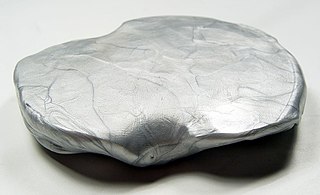 W
WSilly Putty is a toy based on silicone polymers that have unusual physical properties. It bounces, but it breaks when given a sharp blow, and it can also flow like a liquid. It contains a viscoelastic liquid silicone, a type of non-Newtonian fluid, which makes it act as a viscous liquid over a long time period but as an elastic solid over a short time period. It was originally created during research into potential rubber substitutes for use by the United States in World War II.
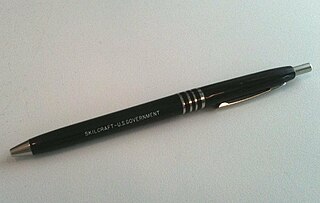 W
WSkilcraft, often stylized as SKILCRAFT, is the registered trade name of the National Industries for the Blind (NIB). Products made by Skilcraft are created largely by visually impaired or severely disabled individuals. Products bearing the Skilcraft brand are commonly used in United States federal government institutions, including the United States Postal Service. They are also commonly sold in U.S. military base exchanges and commissaries.
 W
WStyrofoam is a trademarked brand of closed-cell extruded polystyrene foam (XPS), commonly called "Blue Board", manufactured as foam continuous building insulation board used in walls, roofs, and foundations as thermal insulation and water barrier. This material is light blue in color and is owned and manufactured by The Dow Chemical Company.
 W
WSugru, also known as Formerol, is a patented multi-purpose, non-slumping brand of silicone rubber that resembles modelling clay. It is available in several colours and upon exposure to air, cures to a rubber-like texture.
 W
WPolytetrafluoroethylene (PTFE) is a synthetic fluoropolymer of tetrafluoroethylene that has numerous applications. The commonly known brand name of PTFE-based formulas is Teflon by Chemours, a spin-off from DuPont, which originally discovered the compound in 1938.
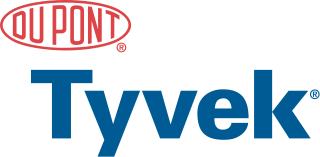 W
WTyvek is a brand of flashspun high-density polyethylene fibers, a synthetic material; the name is a registered trademark of the DuPont company, known for their production of chemicals and textiles. Tyvek is often used as housewrap, a synthetic material used to protect buildings during construction, or as personal protective equipment against lethal viruses such as SARS-CoV-2. The material is difficult to tear, but can easily be cut with scissors or a knife. Water vapor can pass through Tyvek, but liquid water cannot. All of these properties have led to Tyvek being used in a variety of applications.
 W
WUndark was a trade name for luminous paint made with a mixture of radioactive radium and zinc sulfide, as produced by the U.S. Radium Corporation between 1917 and 1938. It was used primarily in watch and clock dials. The people working in the industry who applied the radioactive paint became known as the Radium Girls, because many of them became ill and some died from exposure to the radiation emitted by the radium contained within the product. The product was the direct cause of radium jaw in the dial painters. Undark was also available as a kit for general consumer use and marketed as glow-in-the-dark paint.
 W
WVectran is a manufactured fiber, spun from a liquid-crystal polymer (LCP) created by Celanese Corporation and now manufactured by Kuraray. Chemically it is an aromatic polyester produced by the polycondensation of 4-hydroxybenzoic acid and 6-hydroxynaphthalene-2-carboxylic acid.
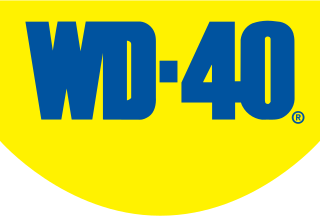 W
WWD-40 is an American brand and the trademark name of a water-displacing spray manufactured by the WD-40 Company based in San Diego, California.
 W
WYupo Corporation is a Japanese manufacturer of synthetic paper. It is the largest manufacturer of synthetic paper in the world with a 70% market share. It is owned by Mitsubishi Chemical and Oji Holdings, also known as the Oji Paper Company.